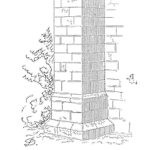
Presentation Skills for Reliability Engineers
We often present proposals and reports. We talk about the plan or results. We want funding, approval, or action. We need excellent presentation skills.
Excellent communication skills is often on job openings. It is not there by chance. Your ability to communicate well, especially via presentations is vital for your success and the success of your reliability program.
If your team, peers, or management do not understand your proposal or report when you present, few will take the time to read the material instead. Your presentation skills provide the incentive for action from your audience. Action you can guide using your presentation skills.
What are presentation skills
We commonly think of presentation skills as the ability to speak to a group often accompanied by slides. A presentation is not just a PowerPoint set of slide, it is what you say, too.
The skill is in the crafting of the presentation along with any supporting materials, such as slides. Many, confuse creating the slides as creating a presentation.
Here is a short list of presentation elements that require some work to perform well:
- Understand the audience
- Understand the message or desired outcome
- Understand the constraints around the presentation
- Design the structure of your presentation (story, timeline, proposal, etc.)
- Create slides to support your presentation (not the other way around)
- Practice, practice, practice (get feedback, too)
- Breath, relax, and adjust the presentation based on audience feedback
In future articles we’ll discuss each of these elements in more detail. You most likely have heard all of these before, so, here as a reminder.
Using a Slide Deck Well
The slide deck is not the presentation. It is not a report, technical archive of your work, the entire contract, proposal, or plan.
The slides or what ever you use as a visual aid, is an aid. The slides reinforce what you are saying. They may provide structure, graphical information, or humor, yet are always in support of the speaking part.
Use:
- large font size,
- high contrast,
- very few words,
- one concept or idea per slide
- Make it readable from the back of the room.
There are plenty of resources for slide best practice, and we’ll explore these in detail in future articles.
Speaking Best Practices
By far the best piece of advice I’ve ever received about speaking is to say less. Say what needs to be said, nothing more.
If you have 20 minutes, do not try to cram 2 hours of material into the time allotted. Simply talking faster doesn’t work.
Say less.
Focus on the one key point you need to make. Think TED talks – twenty minutes or less, and many are memorable even those that take only a few minutes.
Other items to keep in mind include:
- Speak slower the larger the group
- Vary your voice. Change pitch, speed, volume, etc.
- Vary sentence length.
- Include pauses – a pause can contain a lot of information when done well.
- Breathe – take a deep breath, regularly during your presentation
- Speak to individuals in the audience, scan and look at your audience members
- Do not read the slides or a script, you know the material, just talk about it.
Again, there are a lot great resources on public speaking. Much of this advice you have seen before. The key here is to practice. Get in front of audiences routinely and get feedback. Like many skills, you can improve with deliberate practice.
Learning How to Present Well
Practice, practice, practice. Practice with audiences. Sign up for speaking engagements where ever you can and treat every presentation as another chance to learn.
When possible ask a friend to critic your presentation in a helpful manner. Ask for specifics on your voice, pacing, message, structure, call to action, gesture, etc. Ask for what worked and what could be better.
Watch other present. What works and what doesn’t work? Take notes, incorporate elements that work into your speaking portfolio. Watch for elements that don’t work in your presentations and make corrections.
Nancy Durante studied great speeches and presentations. She broke down the presentations into elements that helps us understand what made them great. Check out Nancy’s books
slide:ology: The Art and Science of Creating Great Presentations
Resonate: Present Visual Stories that Transform Audiences
Illuminate: Ignite Change Through Speeches, Stories, Ceremonies, and Symbols
You can learn to become a great presenter. Study, practice, get feedback and continue to improve with every presentation.
As outlined in this article there is a lot of information, advice, and resources to help you become a great presenter. Doing so is important because as reliability professionals, we often influence others through presentations at staff meetings, in team meetings, and at reviews. Our ability to present well improves our ability to be successful.
 Ask a question or send along a comment.
Please login to view and use the contact form.
Ask a question or send along a comment.
Please login to view and use the contact form.
Leave a Reply